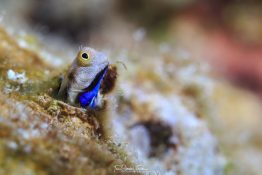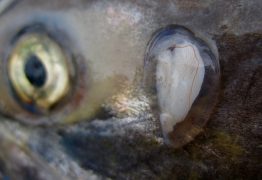It is graduation season, and with that comes well wishes for our graduates and an opportunity to shine a light on their accomplishments. In appreciation of their contributions to enriching the College of the Environment in numerous ways, the College has decided to jointly fund a project with the Campus Sustainability Fund (CSF). Recognizing our students are the next generation of leaders in environmental science and decision-making, we believe this is a contribution that showcases our collective commitment to the sustainability and the well-being of our Husky Community and our planet.
Read more »Building SciComm skills through lessons from Washington’s coast
The coast of Washington is a remote and wild place, where waves bash the rocky shoreline, whales meander just offshore and tidepools teem with eye-popping displays of life. That wildness is precisely what Zoe van Duivenbode relished about her time as a marine educator stationed at Kalaloch Beach, working for Olympic National Park. She spent her days exploring the coast, taking detailed notes and painting the seascapes in front of her, thinking about ways she could connect the lessons of the sea to visiting tourists on their summer vacation.
Read more »Seismologists seek space on volunteers’ floors and lawns to study Seattle seismic risks
The Puget Sound area is vulnerable to several types of seismic risks. We might fixate on “The Really Big One” – the offshore hazard famously profiled in The New Yorker – but other dangers lurk closer underfoot, and might actually deliver more damage to Seattle. The nature of the ground beneath the city — a roughly 4-mile-deep basin filled with soil and soft rock — makes the urban core especially vulnerable to seismic shaking.
Read more at UW News »Tiny fishes fuel life on coral reefs
Coral reefs typically evoke clear, turquoise waters and a staggering number of colorful fishes. But what supports such an abundance of life? In a paper published May 23 in Science, a team of international researchers from Simon Fraser University, University of Washington and other institutions reveals that the iconic abundance of fishes on reefs is fueled by an unlikely source: tiny, bottom-dwelling reef fishes.
Read more at UW News »How the ears of wild Sockeye Salmon provide clues to how key salmon habitat shifts year-to-year
The new study led by the University of Washington shows that analyzing the ear stone — called an otolith — of wild Sockeye Salmon in Alaska reveals how key salmon habitat shifts year-to-year. Published in Science on May 23, the study suggests that different parts of the watershed are hot spots for salmon production and growth. These favorable locations change year-to-year depending on climate conditions and their impacts on local landscapes, which affects the value of the habitats.
Read more at UW News »





